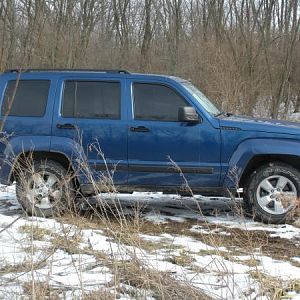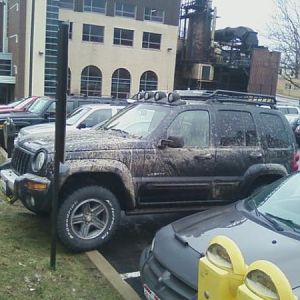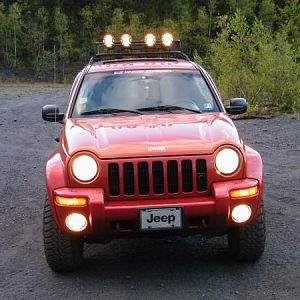Anyone struggling with rogue, phantom, or simply inexplicable misfires should read this. Original article attached, I edited down the text below to fit 10000 word limit. When you are done please share your thoughts.
All OBD II (emission) systems are designed to flag misfires. Here are some tips and procedures that-ll help you diagnose misfires.
OBD II was a new diagnostic feature that was added to the PCM to make misfire diagnosis easier such that the PCM could tell the technician which cylinder was misfiring and how severely. This article is an overview of the Misfire Monitor.
The calculation the PCM uses to determine misfire is very precise, so the signal from the crankshaft sensor must be nearly perfect for the monitor to work.
In addition, differences from one engine to another due to manufacturing tolerances must be accounted for. These differences are learned by the PCM so that the information from the crankshaft sensor can be calibrated to eliminate them.
With the exception of the Misfire Monitor and Comprehensive Component Monitor, all other OBD II monitors require the vehicle to be driven under specific operating conditions in order for the monitor to run. The Misfire Monitor has no such enabling conditions, but there are some conditions that will prevent it from operating.
The correction factor is calculated while the engine is rotating but not under the influence of combustion. The best time to do this is during deceleration from a fairly high rpm because the PCM shuts the injectors down.
Chrysler vehicles require three deceleration periods before their crankshaft correction, aka "Adaptive Numerator" can be learned. Theres a data PID (Parameter Identification Display) for this that shows "Adaptive Numerator Learned? Yes or No" on the scan tool display.
Note that simply erasing the DTCs will not erase the Adaptive Numerator. The battery cable must be disconnected or -All Adaptives- must be erased with a scanner. To accelerate the learning process, Chrysler transmissions can be placed in a low gear and the vehicle accelerated and decelerated without braking.
One less obvious point about the correction factor is that it should be erased if the crankshaft sensor, harmonic balancer, engine, flywheel or torque converter are replaced or disturbed. If the old value is left in the PCM, a misfire DTC can set due to the error.
Another reason the PCM may disable the Misfire Monitor is a low fuel level! Note that fuel level is now an input to most OBD II PCMs. Carmakers are not required to record a misfire due to pump cavitation caused by a low fuel level. In general, the minimum tank level threshold is 15%. Also note that some early OBD II vehicles may have the Misfire Monitor permanently disabled through a software flash to the PCM.
To get the MIL to illuminate steadily, the misfire has to occur on two different "Trips", and the operating conditions must be very similar during both of them.
The decision of whether a misfire is a severe, catalyst-damaging type, or a more infrequent misfire that will only elevate emissions levels is done by counting the frequency of occurrence.
The threshold of allowed misfire counts can vary with the load placed on the engine as well. For instance, Ford allows up to 40% misfire at idle before flashing the MIL, but the threshold drops to 1% to 4% under load. (I wonder, what is Chrysler?)
A manufacturer is required to store a Freeze Frame only after the second failure of a two-trip DTC. Chrysler, however, has decided to store one on the first trip. This is good news, since the operating conditions that were present the first time the monitor failed may not be consistent with the normal driving patterns of the owner. Bottom line: If the owner of an OBD II Chrysler vehicle has a misfire complaint, check the Freeze Frame data, even if the MIL is not on.
After confirming that plugs and coils are good, next try a compression test on both the problem cylinder and the companion cylinder that shares the crank throw with it.
Test the fuel injectors electrically with a lab scope current probe. If possible determine whether the injector is delivering proper fuel quantity.
Test entire ignition system with the scope and current probe.
Multiple-cylinder misfires should direct you toward items that can affect all or several cylinders. Systemic examples would include: a bad MAP, or IACV, or fuel pump, and so on.
Motor, May 2000 Issue
Diagnosing Those Maddening Misfires
By Jeff MastermanAll OBD II (emission) systems are designed to flag misfires. Here are some tips and procedures that-ll help you diagnose misfires.
OBD II was a new diagnostic feature that was added to the PCM to make misfire diagnosis easier such that the PCM could tell the technician which cylinder was misfiring and how severely. This article is an overview of the Misfire Monitor.
Always On Guard
The Misfire Monitor constantly monitors fluctuations in the crankshaft sensor signal that might indicate a misfire. If a cylinder increases the speed of the crankshaft on its power stroke, the PCM considers it to be working properly. A cylinder that doesn't fire, will slow the rotation of the crankshaft at the time when it should be accelerating. This small fluctuation can then be filtered out of the signal by the PCM and identified as a misfire. If a misfire is consistent, the PCM uses the cam sensor to identify the offending cylinder. Note that a DTC for a single-cylinder misfire, such as P0304, indicates that cylinder No. 4 is misfiring. If the misfire is inconsistent or occurs on multiple cylinders, the PCM sets DTC P0300.The calculation the PCM uses to determine misfire is very precise, so the signal from the crankshaft sensor must be nearly perfect for the monitor to work.
In addition, differences from one engine to another due to manufacturing tolerances must be accounted for. These differences are learned by the PCM so that the information from the crankshaft sensor can be calibrated to eliminate them.
With the exception of the Misfire Monitor and Comprehensive Component Monitor, all other OBD II monitors require the vehicle to be driven under specific operating conditions in order for the monitor to run. The Misfire Monitor has no such enabling conditions, but there are some conditions that will prevent it from operating.
The Perfect Signal
As stated earlier, the PCM learns the perfect crankshaft position sensor signal to use for misfire detection. That means that if a vehicle suffers from, say, a dead battery before a technician begins his misfire diagnosis, that tech will have to take certain steps for the crankshaft correction to be relearned. This must be done before the Misfire Monitor can function.The correction factor is calculated while the engine is rotating but not under the influence of combustion. The best time to do this is during deceleration from a fairly high rpm because the PCM shuts the injectors down.
Chrysler vehicles require three deceleration periods before their crankshaft correction, aka "Adaptive Numerator" can be learned. Theres a data PID (Parameter Identification Display) for this that shows "Adaptive Numerator Learned? Yes or No" on the scan tool display.
Note that simply erasing the DTCs will not erase the Adaptive Numerator. The battery cable must be disconnected or -All Adaptives- must be erased with a scanner. To accelerate the learning process, Chrysler transmissions can be placed in a low gear and the vehicle accelerated and decelerated without braking.
One less obvious point about the correction factor is that it should be erased if the crankshaft sensor, harmonic balancer, engine, flywheel or torque converter are replaced or disturbed. If the old value is left in the PCM, a misfire DTC can set due to the error.
Another reason the PCM may disable the Misfire Monitor is a low fuel level! Note that fuel level is now an input to most OBD II PCMs. Carmakers are not required to record a misfire due to pump cavitation caused by a low fuel level. In general, the minimum tank level threshold is 15%. Also note that some early OBD II vehicles may have the Misfire Monitor permanently disabled through a software flash to the PCM.
The MIL and Misfires
The behavior of the MIL during a misfire can also be confusing. Early OBD II vehicles flashed the MIL during a Type A, or catalyst-damaging, misfire and left it on steady after one occurrence, or "Trip". Later vehicles considered all misfire DTCs "Two Trip DTCs". Also be aware that a vehicle with a catalyst-damaging misfire can flash the MIL while the misfire is occurring, but the light may go out if the misfire stops or becomes a less severe, or Type B, misfire.To get the MIL to illuminate steadily, the misfire has to occur on two different "Trips", and the operating conditions must be very similar during both of them.
The decision of whether a misfire is a severe, catalyst-damaging type, or a more infrequent misfire that will only elevate emissions levels is done by counting the frequency of occurrence.
The threshold of allowed misfire counts can vary with the load placed on the engine as well. For instance, Ford allows up to 40% misfire at idle before flashing the MIL, but the threshold drops to 1% to 4% under load. (I wonder, what is Chrysler?)
DTCs
On the first occurrence of a misfire detected by the PCM, a one-trip code will be stored even though the MIL is off. This one-trip code is called different things by different automakers and scan tool manufacturers. Whether its called a One Trip DTC, Continuous DTC, Temporary DTC or Memory Code, you still must learn how and where to access it on your scanner. Note: this DTC will not be displayed in Generic OBD II Mode, since it indicates only a single failure.A manufacturer is required to store a Freeze Frame only after the second failure of a two-trip DTC. Chrysler, however, has decided to store one on the first trip. This is good news, since the operating conditions that were present the first time the monitor failed may not be consistent with the normal driving patterns of the owner. Bottom line: If the owner of an OBD II Chrysler vehicle has a misfire complaint, check the Freeze Frame data, even if the MIL is not on.
Diagnosis
If you encounter a specific misfire DTC, general misfire conditions (P0300) should be less-likely. Concentrate on cylinder-specific DTCs.After confirming that plugs and coils are good, next try a compression test on both the problem cylinder and the companion cylinder that shares the crank throw with it.
Test the fuel injectors electrically with a lab scope current probe. If possible determine whether the injector is delivering proper fuel quantity.
Test entire ignition system with the scope and current probe.
Multiple-cylinder misfires should direct you toward items that can affect all or several cylinders. Systemic examples would include: a bad MAP, or IACV, or fuel pump, and so on.










